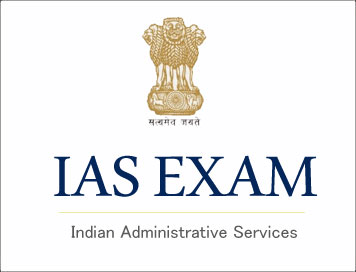The Union Public Service Commission (UPSC) conducts the Civil Services Examination in India, which is a constitutional body. Through this examination, suitable candidates are selected for various prestigious services such as the Indian Administrative Service (IAS), Indian Police Service (IPS), Indian Forest Service (IFoS), Indian Foreign Service (IFS), Indian Revenue Service (IRS), Indian Railway Traffic Service (IRTS), and Indian Corporate Law Service (ICLS), among others. Although a large number of candidates participate in this exam every year, only a few of them achieve success.
The 'Civil Services Examination' is mainly conducted in three stages (Preliminary, Main, and Interview), the general overview of which is as follows:
Preliminary Examination:
-
The first examination in the Civil Services Examination process is the Preliminary Examination. This exam is entirely objective in nature. Each question in this exam has four options (a, b, c, and d), and the candidate has to choose the correct option.
-
The answer sheet for this exam is provided in the form of an OMR (Optical Mark Recognition) sheet. The OMR sheet has four circles in front of each question. The correct choice among the options needs to be filled with a black ballpoint pen in the relevant circle (circle) in front of the question.
-
In the current format of the Preliminary Examination, there are two question papers, General Studies, and CSAT (Civil Services Aptitude Test). There are 100 questions (200 marks) in General Studies, and 80 questions (200 marks) in CSAT. CSAT is a qualifying exam. Candidates who qualify in CSAT (scoring at least 33% marks in the CSAT question paper) have their merit determined based on the marks obtained in General Studies. The selection for the Main Examination is made based on this merit.
-
It is important to note that there is a provision for negative marking in General Studies and CSAT. For each incorrect answer, 1/3 (one-third) of the marks allotted to the question are deducted.
Main Examination:
-
The second stage of the Civil Services Examination is called the 'Main Examination.'
-
Only those candidates who are selected in the Preliminary Examination get the opportunity to appear in the Main Examination.
-
In the Main Examination, descriptive or subjective questions with different word limits are asked. This is why a good writing style is considered very important for success in the Main Examination.
-
The Main Examination consists of 2 qualifying papers (English and an Indian language), one essay, 4 General Studies papers, and two optional subject papers, totaling 9 question papers.
-
In the Main Examination, the nature of both qualifying papers (English and an Indian language) is qualifying, with 300 marks each, and a minimum qualifying score of 25% (75 marks) set. These marks are not included in the determination of eligibility.
-
For eligibility determination, the Main Examination is of 1750 marks, including 1000 marks for General Studies (4 question papers of 250 marks each), 500 marks for an optional subject (2 question papers of 250 marks each), and 250 marks for the essay.
|
Paper |
Subject |
Duration |
Total Marks |
|
Paper A |
One of the Indian Language to be selected by the candidate from the Languages included in the Eighth Schedule to the Constitution |
3 hours |
300 (Qualifying) |
|
Paper B |
English |
3 hours |
300 (Qualifying) |
|
Paper I |
Essay |
3 hours |
250 |
|
Paper II |
General Studies I – Indian Heritage & Culture, History & Geography of the World & Society |
3 hours |
250 |
|
Paper III |
General Studies II – Governance, Constitution, Welfare Initiatives, Social Justice & International Relations |
3 hours |
250 |
|
Paper IV |
General Studies III – Technology, Economic Development, Agriculture, Biodiversity, Security & Disaster Management |
3 hours |
250 |
|
Paper V |
General Studies IV – Ethics, Integrity & Aptitude |
3 hours |
250 |
|
Paper VI |
Optional Subject – Paper I |
3 hours |
250 |
|
Paper VII |
Optional Subject – Paper II |
3 hours |
250 |
|
Grand Total for Qualification |
- |
- |
1750 |
-
The main examination question papers are published in both English and Hindi languages; however, candidates are allowed to answer in any of the 22 languages included in the Eighth Schedule of the Constitution.
-
If a candidate has chosen a literature subject (such as Hindi literature, Sanskrit literature, Kannada literature) as an optional subject, they are exempted from writing the answer in the script of that language, even if their medium of examination is not in that language.
Interview:
-
The final and crucial stage of this examination is called the interview, which is generally conducted in February-March.
-
In this stage, a panel of experts assesses the candidate's personality development. This stage carries 275 marks. While negative marking is not considered, incorrect or relatively common answers can impact the overall score due to negative marking.
-
There is no prescribed curriculum for this stage, making it relatively challenging. The interview involves oral questioning by the interview board members at the designated venue in the commission.
Merit List:
-
Typically, about a week after the completion of all interviews, the final list of selected candidates is released.
-
This merit list is determined by adding the scores of the main examination and the interview.







